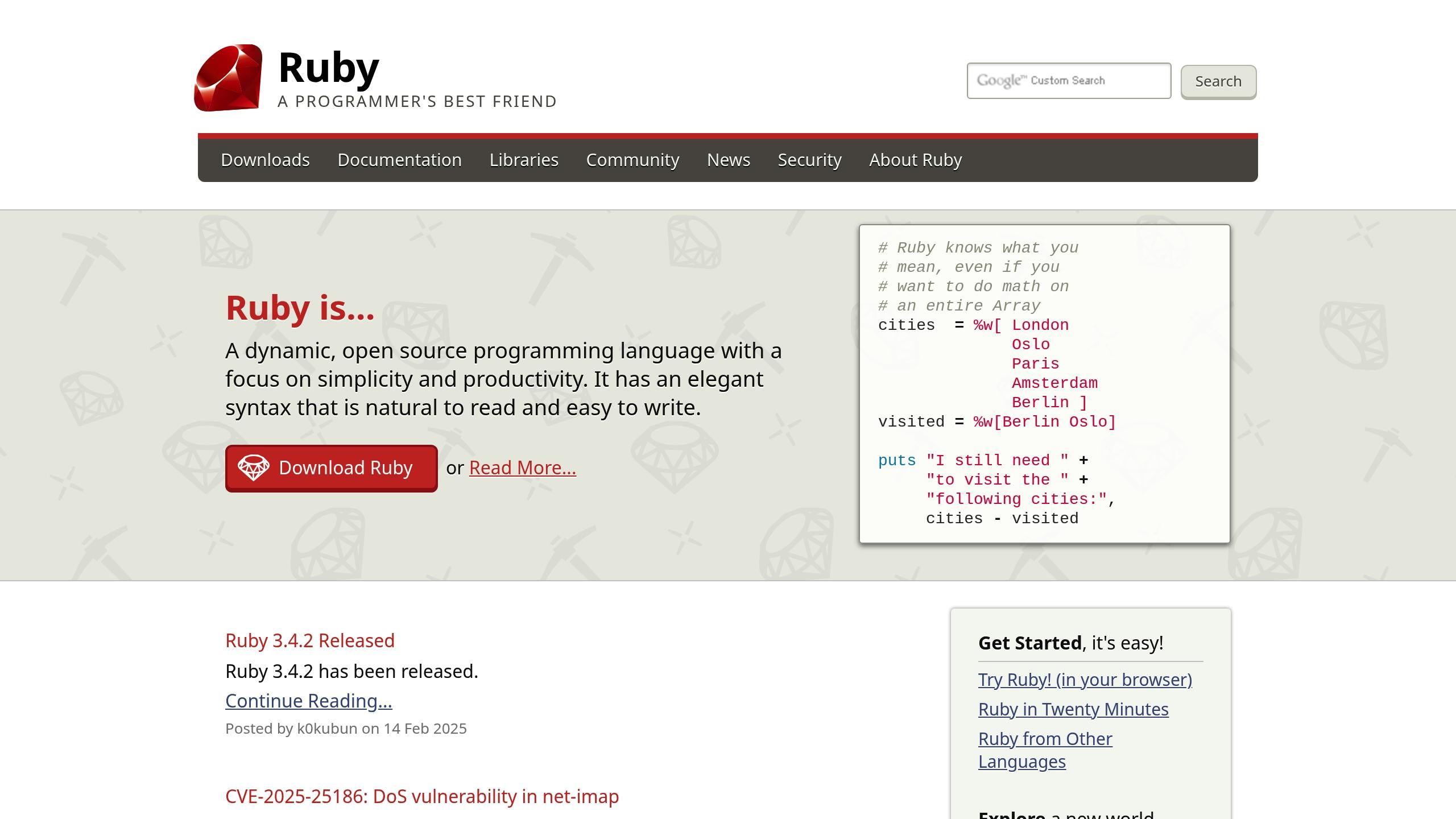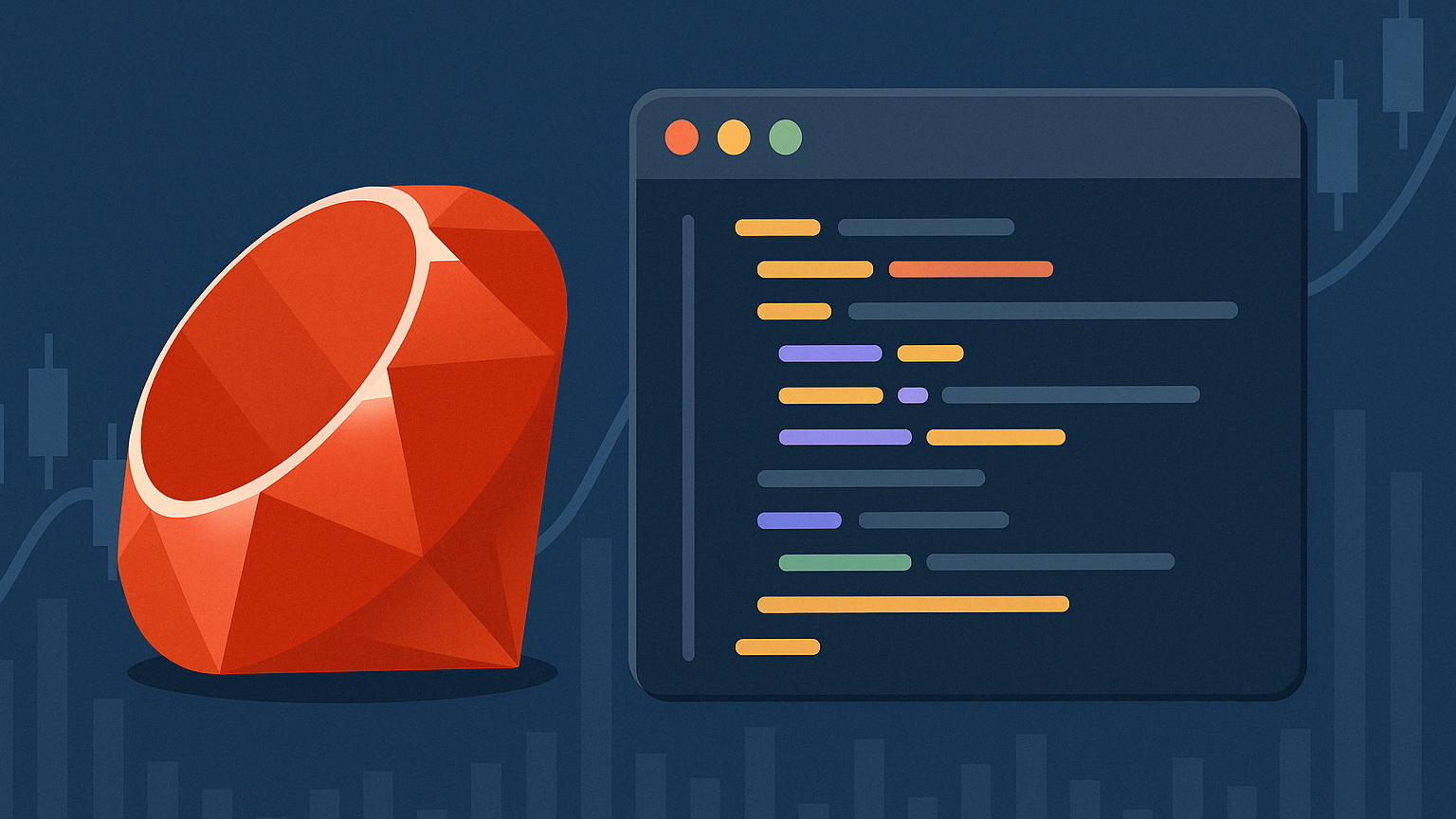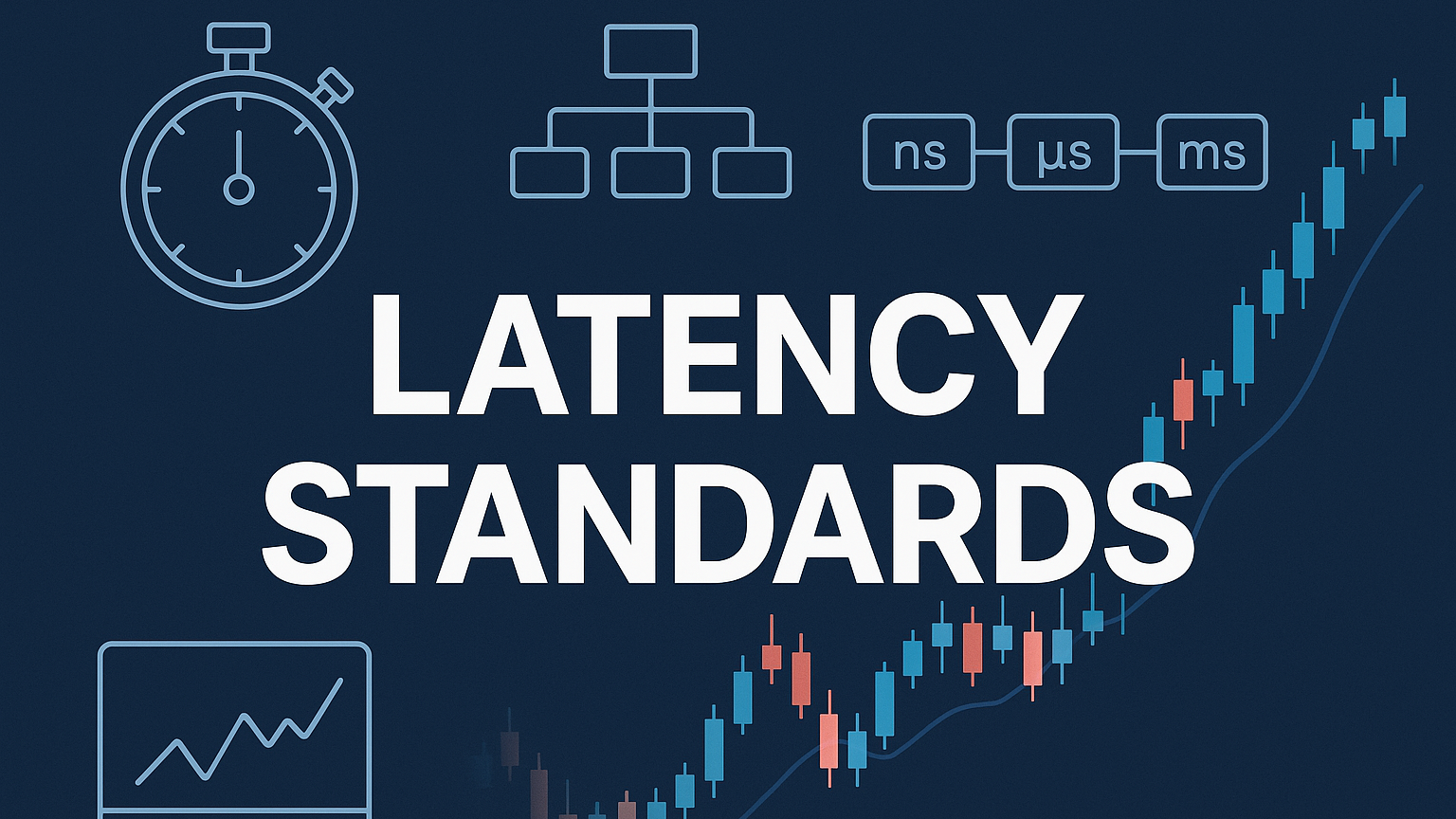Explore how to leverage a beginner-friendly programming language to create efficient trading algorithms and enhance your trading strategies.
Ruby is a beginner-friendly programming language that can be used to create trading algorithms. Its simple syntax, flexibility, and rich library ecosystem make it a viable choice for automating trades and analyzing markets. Here's why Ruby stands out for trading:
- Readable Code: Easy to understand and debug.
- Quick Development: Fast iteration for refining strategies.
- Flexibility: Multiple ways to solve problems.
- Integration: Works well with APIs like Binance and Interactive Brokers.
Key Steps to Start:
- Install Ruby and essential gems (
bundler,rest-client, etc.). - Use libraries like
QuantLib-Rubyfor financial calculations,alpaca-trade-apifor trade execution, andbacktestfor strategy testing. - Write algorithms with clear structures for data processing, signal generation, and trade execution.
- Test strategies using backtesting tools and refine them with risk management techniques.
Quick Comparison of Ruby's Features for Trading:

| Feature | Advantage | Use Case |
|---|---|---|
| Readable Syntax | Easier to debug and maintain | Writing trading algorithms |
| Rich Libraries | Broad functionality | Market analysis and execution |
| Web Frameworks (Rails) | Build trading platforms | User-friendly trading interfaces |
Ruby simplifies the process of building, testing, and deploying trading strategies, making it a great option for beginners in algorithmic trading.
Related video from YouTube
Setting Up Ruby for Trading
Required Software Setup
First, install Ruby. Depending on your operating system, follow these recommended methods:
| OS | Installation Method | Command |
|---|---|---|
| macOS | Homebrew | brew install ruby |
| Ubuntu | APT | sudo apt-get install ruby-full |
| Windows | Chocolatey | choco install ruby |
After installation, confirm that Ruby is properly set up by running:
ruby -v
Next, install the essential Ruby gems required for trading:
gem install bundler rest-client websocket faye-websocket
Development Tools Setup
Choose a code editor like RubyMine or Visual Studio Code. Then initialize your trading project with Git:
git init
git add .
git commit -m "Initial setup for trading algorithm"
Connecting to Market Data
To access market data, use API clients. For Binance:
require 'binance-connector'
client = Binance::Spot.new(
key: 'your_api_key',
secret: 'your_api_secret'
)
btc_price = client.ticker_24hr(symbol: 'BTCUSDT')
For Interactive Brokers:
require 'ib-ruby'
ib = IB::Connection.new
tesla_stock = IB::Stock.new(symbol: 'TSLA')
Store your API credentials securely, e.g., in a YAML file:
api_key: YOUR_API_KEY
api_secret: YOUR_API_SECRET
base_url: https://api.exchange.com
Ruby Trading Libraries
Ruby provides several libraries tailored for trading and analysis. These tools leverage Ruby's simplicity and flexibility, making it easier to transition from development to live trading.
Trading-Specific Libraries
Here are some key libraries:
QuantLib-Ruby: Pricing a vanilla option:
require 'quantlib-ruby'
strike_price = 100.0
volatility = 0.20
risk_free_rate = 0.05
maturity = 1.0 # 1 year
option = QuantLib::VanillaOption.new(
strike_price, volatility, risk_free_rate, maturity
)
price = option.price
alpaca-trade-api: Placing a market order:
require 'alpaca_trade_api'
client = Alpaca::Trade::Api::Client.new(
endpoint: 'https://paper-api.alpaca.markets',
key_id: 'YOUR_KEY_ID',
secret_key: 'YOUR_SECRET_KEY'
)
order = client.new_order(
symbol: 'AAPL',
qty: 100,
side: 'buy',
type: 'market',
time_in_force: 'day'
)
backtest: A DSL for backtesting strategies:
require 'backtest'
strategy = Backtest.define do
entry do
buy if rsi(14) < 30
end
exit do
sell if rsi(14) > 70
end
end
Creating a Basic Trading Algorithm
Building a trading algorithm in Ruby requires a clear structure and a strong focus on managing risk.
Basic Script Structure
class TradingAlgorithm
def initialize(symbol, timeframe)
@symbol = symbol
@timeframe = timeframe
@position = nil
@data_handler = MarketDataHandler.new(symbol)
@risk_manager = RiskManager.new
end
def execute_strategy
current_price = @data_handler.get_current_price
historical_data = @data_handler.get_historical_data
if generate_signals(historical_data)
position_size = @risk_manager.calculate_position_size(current_price)
place_trade(position_size)
end
end
private
def generate_signals(data)
# Signal generation logic
end
def place_trade(size)
# Execute trades
end
end
Trade Signal Rules
def generate_signals(data)
ma9 = calculate_moving_average(data, 9)
ma20 = calculate_moving_average(data, 20)
if ma9 > ma20 && @position.nil?
execute_buy(data.last)
elsif ma9 < ma20 && @position == :long
execute_sell(data.last)
end
end
def calculate_moving_average(data, period)
data.last(period).sum / period
end
Risk Management Code
class RiskManager
def initialize(max_risk_percent: 0.02, max_position_size: 100_000)
@max_risk_percent = max_risk_percent
@max_position_size = max_position_size
end
def calculate_position_size(current_price)
account_balance = get_account_balance
risk_amount = account_balance * @max_risk_percent
position_size = (risk_amount / calculate_stop_distance(current_price)).floor
[position_size, @max_position_size].min
end
def set_stop_loss(entry_price, position_size)
stop_distance = calculate_stop_distance(entry_price)
stop_price = entry_price - stop_distance
{
price: stop_price,
size: position_size,
max_loss: (entry_price - stop_price) * position_size
}
end
private
def calculate_stop_distance(price)
atr = calculate_atr(price, 14)
atr * 2
end
end
Testing Trading Algorithms
Running Backtests
ActiveRecord::Base.connected_to(database: :test) do
class Backtest
def initialize(strategy, start_date, end_date)
@strategy = strategy
@historical_data = fetch_historical_data(start_date, end_date)
@initial_capital = 100_000
@results = { trades: [], equity: [] }
end
def run
@historical_data.each do |data_point|
signals = @strategy.generate_signals(data_point)
execute_trades(signals, data_point)
track_equity(data_point[:timestamp])
end
calculate_performance_metrics
end
private
def calculate_performance_metrics
{
total_return: (@results[:equity].last - @initial_capital) / @initial_capital,
win_rate: calculate_win_rate,
max_drawdown: calculate_max_drawdown,
sharpe_ratio: calculate_sharpe_ratio
}
end
end
end
Strategy Adjustments
| Parameter | Adjustment Method | Impact |
|---|---|---|
| Entry Signals | Modify indicator settings | Improves trade timing |
| Exit Rules | Adjust stop-loss/take-profit | Optimizes trade duration |
| Position Sizing | Test different risk percentages | Balances risk and reward |
| Market Conditions | Test in various periods | Ensures performance across different scenarios |
Conclusion
Key Takeaways
Ruby stands out as a strong choice for algorithmic trading thanks to its straightforward syntax, flexible design, and a wealth of libraries. Its object-oriented nature makes it ideal for creating trading systems that are both scalable and easy to maintain.
| Feature | Advantage | Use Case |
|---|---|---|
| Dynamic Typing | Quick code adjustments | Fast strategy tweaks |
| Object-Oriented Design | Scalable system creation | Managing complex portfolios |
| Web Framework Integration | User-friendly platforms | Building financial interfaces |
| Extensive Libraries | Broad functionality | Market analysis and trade execution |
Steps to Begin
- Build a Strong Foundation
Learn the basics of trading analysis and market behavior before tackling complex strategies. - Start Simple, Then Advance
Begin with straightforward methods like moving average crossovers, then move on to more advanced techniques."Trading is not about predicting the future, but about exploiting patterns in historical data."
- Leverage Tools and Communities
Use external resources such as:- Yahoo Finance for historical market data
- Trading forums for feedback and collaboration






